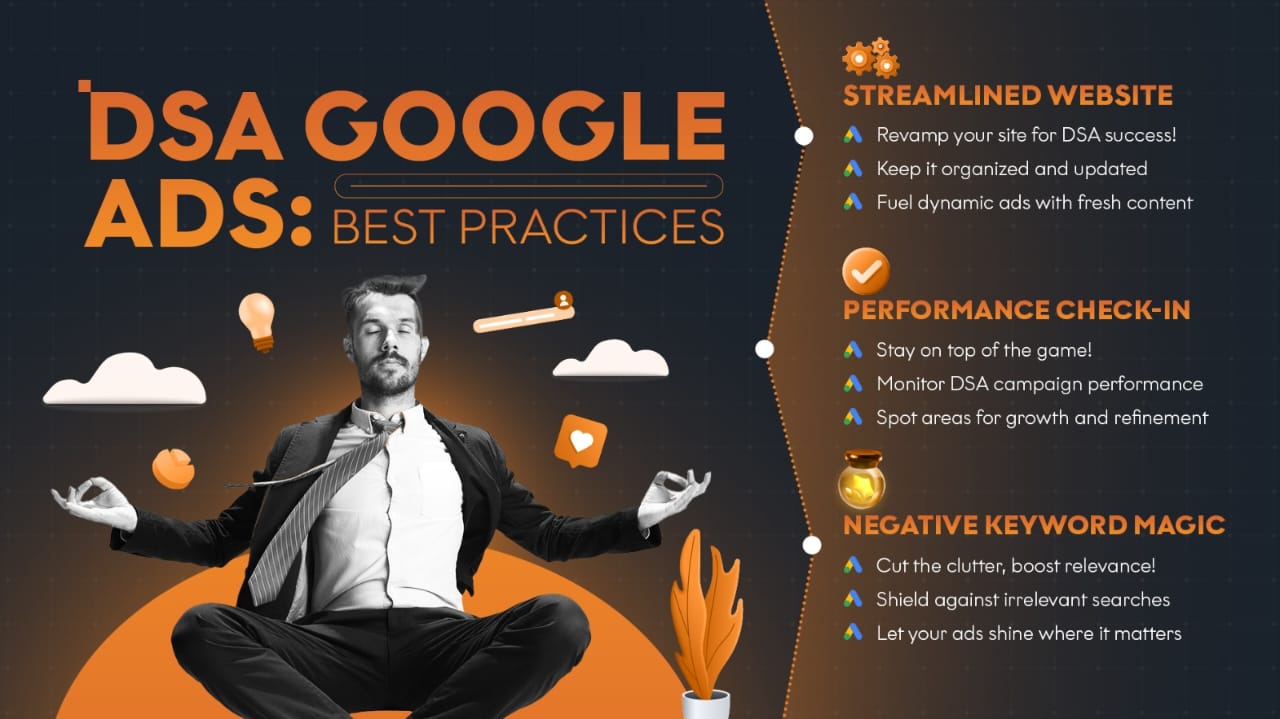Dynamic Search Ads for Beginners: Everything You Need to Know

Dynamic Search Ads, popularly known as DSAs, represent a critical edge in the constantly evolving world of online marketing. As standard keyword searches become growingly complex, DSAs provide a more intuitive and automated approach to connect businesses with potential customers.
This is a comprehensive guide made especially for those new to Google dynamic ads. From small startups to multinational corporations, DSA Google ads are revolutionizing the way businesses reach their target customers by effectively producing ads based on dynamic ad targets. This not only makes DSA campaigns more effective but also streamlines the management process.
So, if you seek to boost your digital presence, understanding dynamic search ads is crucial in today’s competitive environment. This blog will walk you through the basics of the DSAs, and offer actionable insights to help you launch your first campaign.
What are Dynamic Search Ads?
Dynamic search ads are automatically generated advertisements that appear on Google’s search results page. Unlike traditional ads, DSAs produce headlines and final URLs from your website’s content. With DSA Google’s advanced algorithms, dynamic search ads are designed to match relevant search queries, making it simpler for companies to connect with potential consumers.
Here’s How You Can Set Up Dynamic Search Ads
Setting up DSAs is a process that involves a few simple steps within the Google Ads platform:
- Access Google Ads: Sign in to your Google Ads account. In case you don’t have one, you’ll have to create it.
- Start a New Campaign: Once you are logged in, go to the “Campaigns” tab and click the “+” button to create a new campaign.
- Choose Campaign Type: Select the “Search” campaign type and then choose the goal that would perfectly align with your objectives, such as “Sales”, “Leads”, or “Website Traffic”.
- Select Campaign Settings: Fill in the necessary details for your campaign settings, including the campaign name, networks, locations, languages, budget, and more.
- Choose ‘Dynamic Search Ads’: In the “Ad group type” section, select “Dynamic”. This demonstrates that you’re setting up a dynamic search ads campaign.
- Enter Your Domain: Enter the domain of the website you want to use for DSAs and choose the language it’s written in.
- Create Ad Text: Create a description for your ads. Google will automatically generate headlines and display URLs based on the content of your website.
- Set Bids: Decide on a bidding strategy for your campaign. You can set bids manually or use automated bidding strategies based on your campaign goals.
- Targeting: You can choose to target specific categories of your website or allow Google to crawl and decide automatically. You can also set negative targeting to exclude certain pages.
- Review and Launch: Once everything is set up, review your settings and click “save and continue”. Your DSA campaign will now be launched.
It’s crucial to monitor and adjust your DSA campaign over time to ensure optimal performance. Analyze your reports, consider adding negative keywords to exclude irrelevant searches, and refine your ad text if necessary.
How Are Dynamic Search Ads Different From Regular Ads?
Dynamic search advertisements (DSAs) and regular search ads (RSAs) are both types of advertisements on the Google Ads platform, but they work differently and are suitable for various needs.
DSAs, on one hand, are a type of automated ads where Google automatically generates your ad’s headlines and URLs based on the information given on your website. They are dependent on Google’s web crawling and machine learning technology to match search queries with relevant content from your website. This can be especially beneficial for companies with a vast inventory or frequently changing products. This is because the ads will automatically update based on the content of your site. Moreover, DSAs can help fill in the gaps in your keyword campaigns, catching relevant queries that you might have missed.
On the other hand, RSAs require advertisers to manually set the keywords they want to target, write the ad headlines, and choose the landing pages. These ads provide more control over the ad copy and the keywords you’re targeting. RSAs are suitable for businesses with specific, well-defined advertising goals, allowing them to tailor their messaging and landing pages to match their objectives precisely.
IDSAs offer automation, adaptability, and wide coverage, while RSAs provide more control and precision. The choice between the two depends on your business needs, the intricacies of your website, and your advertising objectives. It’s usually helpful to use a combination of both types of ads to achieve an efficient advertising strategy.
Why Should You Care About Dynamic Search Ads?
- Automatic Targeting: With dynamic search ads, Google automatically targets relevant searches based on the content present on your website.
- Adaptation to Market Trends: Dynamic search ads adapt to market changes, ensuring that your advertisements are always relevant.
- Increased Reach: These search ads offer you to reach consumers who search with terms closely related to your product or service, enhancing your potential customer base.
DSA Google Ads: Best Practices
1. Streamlined Website
- Revamp your site for DSA success!
- Keep it organized and updated
- Fuel dynamic ads with fresh content
2. Performance Check-in
- Stay on top of the game!
- Monitor DSA campaign performance
- Spot areas for growth and refinement
3. Negative Keyword Magic
- Cut the clutter, boost relevance!
- Shield against irrelevant searches
- Let your ads shine where it matters
Advanced Strategies for Dynamic Search Ads
- Remarketing with DSA: By incorporating remarketing techniques with dynamic search ads, you can seamlessly target users who have formerly interacted with your website.
- Customizing Ad Content: DSAs can be customized with ad extensions, boosting user engagement.
- Audience Targeting: You can define particular audiences for your dynamic search ads, ensuring that your advertisements reach the most relevant users.
Understanding Dynamic Ad Targets
Dynamic ad targets are the key to dynamic search ads. By selecting the right dynamic ad targets, you can align your ads with specific parts of your website. Understanding dynamic ad targets is important for maximizing the impact of your DSA campaign.
How to Select Dynamic Ad Targets
- Analyze Your Website: Recognize the segments of your website that perfectly align with your business goals.
- Define Your Targets: Choose dynamic ad targets that reflect the most relevant parts of your website.
- Monitor and Adjust: Keep an eye on your dynamic ad targets and make adjustments as and when required.
DSA represents a notable advancement in the world of online advertising, offering an effective way to reach potential consumers. So, whether you are new to the world of online advertising or an experienced marketer, dynamic search ads, along with DSA Google ads and DSA campaigns, offer numerous benefits.
If you are looking to make the most of these tools but need professional guidance, we can become your ideal partner. At AdLift, we are renowned for our expertise in digital marketing, including dynamic search ads. Our team of seasoned professionals will work closely with you to develop a customized strategy aligned with your business needs.
It’s time to embrace the power of dynamic search ads and watch your business reach new heights with AdLift.

